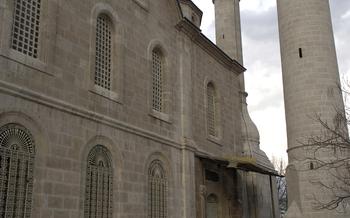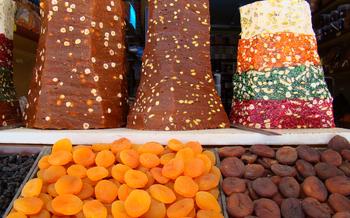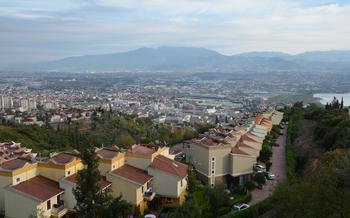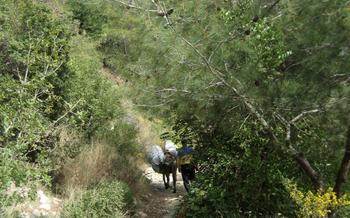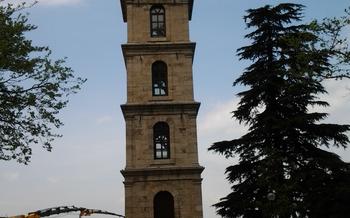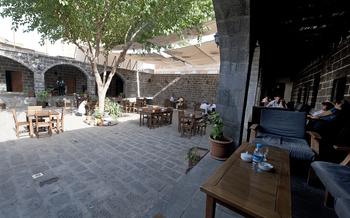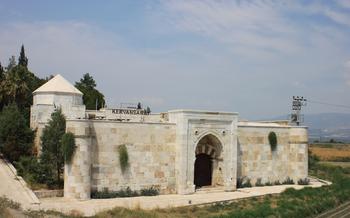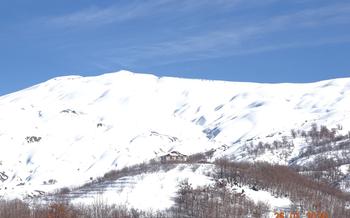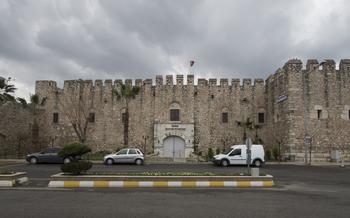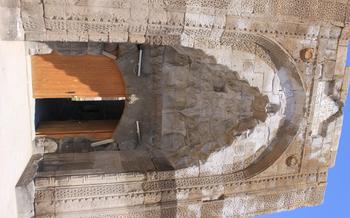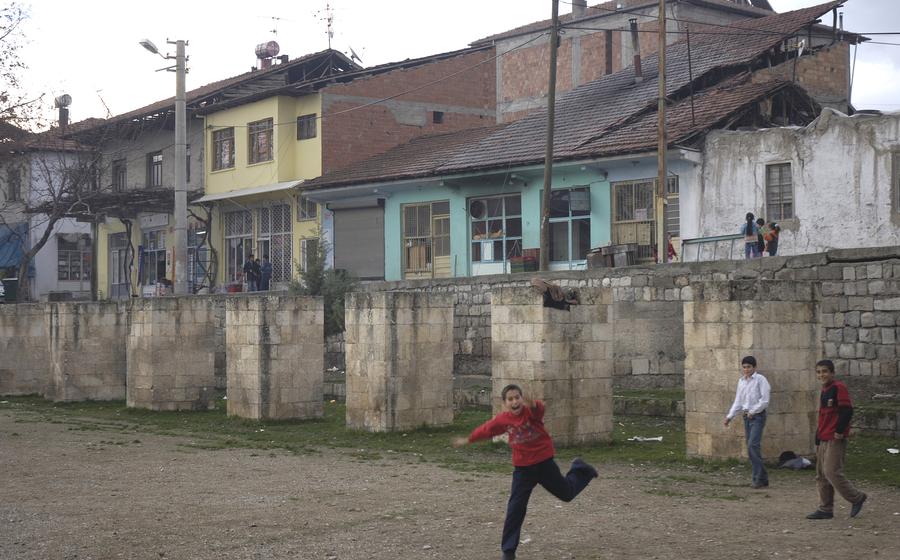
Silahtar Mustafa Pasha Caravanserai
- Silahtar Mustafa Pasha Caravanserai: A Historic Gem in Malatya
- Location and Accessibility
- Step Back in Time: Exploring the Caravanserai's History
- Architectural Marvel: Unveiling the Caravanserai's Design
- A Glimpse into the Caravanserai's Interiors
- Traveling to Malatya: Planning Your Visit
- Suggested Itinerary for a Day Trip to Silahtar Mustafa Pasha Caravanserai
- Unveiling the Caravanserai's Cultural Significance
- Behind the Scenes: Caravanserai's Maintenance and Preservation
- Silahtar Mustafa Pasha Caravanserai: A Symbol of Resilience
- Tips for Photography Enthusiasts
- Local Markets and Shopping Opportunities
- Insider Tip: Unveiling Hidden Gems
Silahtar Mustafa Pasha Caravanserai: A Historic Gem in Malatya
In the heart of Malatya, nestled amidst the bustling city streets, lies a treasure of Turkish architectural heritage – the Silahtar Mustafa Pasha Caravanserai. This magnificent structure stands as a testament to the rich history of the Silk Road, offering a glimpse into the past and a captivating experience for travelers seeking to uncover the hidden gems of Turkey.
Built in the 16th century during the reign of the Ottoman Empire, the caravanserai served as a vital resting place for traders and travelers traversing the ancient trade routes. Its strategic location along the Silk Road, connecting East and West, made it a hub of cultural exchange and commerce. Over the centuries, the caravanserai has witnessed countless stories of adventure, intrigue, and cultural encounters, leaving an indelible mark on the history of Malatya.
Location and Accessibility
The Silahtar Mustafa Pasha Caravanserai is situated in the heart of Malatya, a city in eastern Turkey. Its exact address is Ulucanlar Mahallesi, Cumhuriyet Caddesi No:18, Malatya. To reach the caravanserai, visitors can take a leisurely walk from the city center, which takes approximately 15 minutes. Alternatively, they can opt for public transportation, with several bus lines stopping nearby. For those arriving by car, limited parking is available in the vicinity, subject to local regulations.
The best time to visit the caravanserai is during the shoulder seasons, spring and autumn, when the weather is pleasant and mild. During the summer months, temperatures can soar, making it less comfortable for outdoor exploration. In winter, snowfall is common, adding a picturesque charm to the caravanserai's surroundings.
Step Back in Time: Exploring the Caravanserai's History
The construction of the Silahtar Mustafa Pasha Caravanserai dates back to the 17th century, commissioned by Mustafa Pasha, a high-ranking official during the reign of the Ottoman Sultan Murad IV. Serving as a vital stopover along the bustling Silk Road trade route, the caravanserai played a pivotal role in facilitating commerce and cultural exchange between East and West.
Stories abound of weary travelers and merchants seeking refuge within the caravanserai's walls, their tales of distant lands and exotic goods filling the air. Caravans of camels laden with precious silks, spices, and jewels would arrive from afar, their owners eager to rest and replenish their supplies before continuing their arduous journeys.
Over the centuries, the caravanserai witnessed countless historical events and became a repository of rich stories. Legends speak of famous travelers who graced its halls, leaving behind tales of adventure and intrigue. One such anecdote tells of a renowned explorer who, while seeking shelter from a raging storm, stumbled upon a secret chamber hidden beneath the caravanserai. Within this hidden sanctum, he discovered a treasure trove of ancient artifacts and manuscripts, revealing a glimpse into the long-forgotten history of the region.
Architectural Marvel: Unveiling the Caravanserai's Design
The Silahtar Mustafa Pasha Caravanserai showcases distinctive features of Ottoman architecture, blending functionality with aesthetics. Its layout revolves around a central courtyard, surrounded by iwans (vaulted halls) and rooms. These iwans provide access to the caravanserai's various chambers, creating a sense of symmetry and order. The intricate arches, domes, and vaults add to the architectural grandeur, offering shelter and shade to weary travelers.
One of the most striking features of the caravanserai is its imposing entrance portal, adorned with intricate carvings and calligraphy. The portal leads into the main courtyard, which once served as a bustling hub of activity. The courtyard is surrounded by two-story buildings, featuring arched windows and balconies that overlook the central space. These balconies allowed merchants to display their goods, creating a vibrant marketplace within the caravanserai's walls.
Throughout the caravanserai, visitors can admire the delicate tilework and decorative elements that adorn the walls and ceilings. These intricate details showcase the artistic prowess of the Ottoman artisans who worked on its construction. From the geometric patterns to the floral motifs, each element contributes to the caravanserai's unique charm and visual appeal.
Don't miss the opportunity to explore the caravanserai's stables, which once housed the animals that carried the goods along the Silk Road. These stables provide a glimpse into the logistical challenges faced by traders and travelers in the past. The caravanserai's architecture is a testament to the ingenuity and foresight of its builders, creating a space that was both functional and visually stunning.
A Glimpse into the Caravanserai's Interiors
Step inside the Silahtar Mustafa Pasha Caravanserai, and you'll be transported back in time. The rooms, once bustling with the chatter of traders and the clinking of coins, now stand silent, their walls whispering tales of long-forgotten journeys.
Each room is a testament to the caravanserai's rich history. The simple, yet functional design speaks of a time when comfort was found in the shared experiences of travelers from distant lands. The thick walls, built to withstand the harsh elements and protect the precious goods within, create a sense of security and tranquility.
Common areas like the courtyard, with its central fountain and shaded arcades, were once filled with the hustle and bustle of trade. Merchants displayed their wares, haggling over prices and exchanging stories. The mosque, with its intricate mihrab and worn prayer rugs, provided a sanctuary for weary travelers to seek solace and spiritual renewal.
Evidence of past occupants can be found throughout the caravanserai. Inscriptions carved into the walls, left by travelers seeking immortality or expressing gratitude for their safe journey, tell silent stories of those who passed through these halls. Artifacts discovered during restoration work, such as coins, pottery shards, and jewelry, offer glimpses into the lives of the caravanserai's former inhabitants.
Artistic elements and decorations, though faded with time, add a touch of beauty and grandeur to the caravanserai's interiors. Geometric patterns, calligraphy inscriptions, and colorful tilework hint at the artistic traditions of the era. These decorative elements, combined with the interplay of light and shadow through the arched doorways and domed ceilings, create a visually captivating space that transports visitors to another time and place.
Traveling to Malatya: Planning Your Visit
To fully appreciate the beauty and significance of the Silahtar Mustafa Pasha Caravanserai, it is recommended to spend at least a day in Malatya. This historic city offers a wealth of other attractions and activities to complement your visit to the caravanserai. Explore the majestic Malatya Castle, perched atop a hill with stunning views of the city and surrounding countryside. Immerse yourself in the local culture at the Malatya Museum, showcasing the region's rich history and heritage through artifacts and exhibits. Indulge in the delectable flavors of Malatya cuisine, famous for its apricots, yufka, and keşkek, a traditional Turkish dish made from wheat, meat, and spices.
When planning your trip, consider the best time to visit Malatya for the most pleasant weather. The city experiences hot summers and cold winters, with spring and autumn offering the most comfortable temperatures for exploration. Respectful and responsible tourism is essential to preserve the caravanserai and support the local community. Dress modestly, avoid disturbing the peace, and seek permission before taking photographs of people. Embrace the opportunity to interact with locals, learn about their culture, and contribute to the preservation of this historic gem.
Suggested Itinerary for a Day Trip to Silahtar Mustafa Pasha Caravanserai
For a fulfilling day trip to the Silahtar Mustafa Pasha Caravanserai, it's advisable to arrive early, preferably by 10 AM. This will provide ample time to explore the caravanserai's exteriors and its captivating surroundings. Start by taking a leisurely stroll around the caravanserai, admiring its impressive architecture and intricate details. Capture the essence of the caravanserai in photographs, ensuring you capture the morning light that beautifully illuminates its facade.
Next, venture inside the caravanserai to delve into its rich history and cultural significance. Explore the various rooms and common areas, including the courtyard, mosque, and stables, each offering a glimpse into the caravanserai's past functions and uses. Keep an eye out for any inscriptions or artifacts that may provide insights into the lives of its former occupants.
Spend the afternoon immersing yourself in the caravanserai's captivating atmosphere. Find a serene spot in the courtyard to relax and soak in the tranquility of the surroundings. Alternatively, engage with the locals, learning about their stories and traditions. If time permits, consider visiting the nearby markets or bazaars to discover local products and handicrafts.
As the day draws to a close, head to the caravanserai's rooftop or a vantage point to witness the sunset. The golden hues of the setting sun casting a warm glow on the caravanserai create a magical ambiance. Capture this breathtaking moment with your camera, ensuring you have a lasting memory of your visit to the Silahtar Mustafa Pasha Caravanserai.
Unveiling the Caravanserai's Cultural Significance
Silahtar Mustafa Pasha Caravanserai stands as a testament to the rich cultural heritage of Malatya and Turkey. It played a pivotal role in facilitating trade and cultural exchange along the historic Silk Road, serving as a meeting point for diverse people, languages, and customs.
Cultural Exchange and Trade: The caravanserai's strategic location on the trade route fostered a vibrant exchange of goods, ideas, and cultural influences. Merchants from far-off lands brought exotic products, stories, and customs, creating a melting pot of diverse cultures within the caravanserai's walls.
Turkish Hospitality and Architectural Heritage: The caravanserai embodies the essence of Turkish hospitality, offering shelter, food, and a safe haven to weary travelers. Its architectural design, with its intricate arches, domes, and iwans, showcases the mastery of Ottoman craftsmanship, blending functionality with aesthetic beauty.
Symbol of Malatya's Identity: The Silahtar Mustafa Pasha Caravanserai has become an iconic symbol of Malatya's rich history and cultural identity. It stands as a reminder of the city's significance as a trading hub and a crossroads of civilizations.
Preservation and Promotion: In recognition of its cultural significance, the caravanserai has undergone extensive restoration and conservation efforts to preserve its authenticity and showcase its grandeur. Local authorities and organizations actively promote the caravanserai as a cultural heritage site, hosting events, exhibitions, and educational programs to raise awareness of its historical and cultural importance.
Behind the Scenes: Caravanserai's Maintenance and Preservation
The Silahtar Mustafa Pasha Caravanserai has undergone several restoration and conservation projects to preserve its historical value and architectural integrity. The local authorities, in collaboration with heritage organizations, have played a crucial role in overseeing these initiatives.
One of the major challenges faced during the restoration process was maintaining the caravanserai's authenticity while adapting it to modern-day requirements. Careful attention was paid to preserving original materials and techniques, ensuring that any modifications or additions blended seamlessly with the existing structure.
The caravanserai's transformation into a museum required careful planning to create an immersive experience for visitors without compromising its historical integrity. Display cases and interactive exhibits were integrated into the caravanserai's layout, showcasing artifacts and providing information about its past.
The ongoing maintenance of the caravanserai involves regular inspections, repairs, and cleaning to prevent deterioration. Local artisans skilled in traditional construction methods are often employed to ensure that repairs are carried out with the utmost care and precision.
The success of these preservation efforts is evident in the caravanserai's current state, which showcases its grandeur and historical significance. The Silahtar Mustafa Pasha Caravanserai stands as a testament to the dedication and expertise of those involved in its restoration and preservation, ensuring its legacy continues to inspire future generations.
Silahtar Mustafa Pasha Caravanserai: A Symbol of Resilience
The Silahtar Mustafa Pasha Caravanserai has stood the test of time, weathering natural disasters, conflicts, and changes in its usage. It has undergone adaptations and modifications to suit the changing needs of its users, embodying the enduring spirit of the Turkish people.
Natural Disasters and Conflicts
The caravanserai has survived numerous earthquakes and wars throughout the centuries. Despite sustaining damages, it has been consistently restored and repaired, a testament to its resilience. The scars of these events are visible in the caravanserai's architecture, serving as a reminder of its enduring strength.
Changing Usage and Adaptation
Over the centuries, the caravanserai's function has evolved from a resting place for traders to a military barracks and a prison. Despite these changes in usage, its essential character has remained intact. The caravanserai's adaptability demonstrates its ability to serve different purposes while preserving its historical significance.
Symbol of Resilience
The Silahtar Mustafa Pasha Caravanserai stands as a symbol of resilience, reflecting the indomitable spirit of the Turkish people. Its ability to endure challenges and adapt to changing circumstances is a source of pride for the local community. The caravanserai's ongoing preservation efforts ensure that this symbol of resilience will continue to inspire future generations.
Tips for Photography Enthusiasts
The Silahtar Mustafa Pasha Caravanserai offers a wealth of opportunities for photography enthusiasts to capture stunning images. To make the most of your visit, consider arriving early in the morning or late in the afternoon to take advantage of the soft, golden light that illuminates the caravanserai's architectural details.
Experiment with different camera settings and techniques to capture the essence of the caravanserai. Use a wide-angle lens to capture the grandeur of the courtyard and the sweeping arches, or zoom in on intricate details like the carved stonework and tilework.
Don't be afraid to explore unique angles and perspectives. Climb to the upper levels of the caravanserai to capture elevated shots of the courtyard and the surrounding landscape. Look for reflections in the water features or play with shadows to create dramatic effects.
Remember to respect the privacy of any visitors or occupants of the caravanserai. Ask permission before photographing people, and be mindful of any signs or restrictions that may be in place.
Local Markets and Shopping Opportunities
The Silahtar Mustafa Pasha Caravanserai is situated in close proximity to vibrant local markets and bazaars, offering visitors an opportunity to immerse themselves in the rich tapestry of Turkish culture and traditions. These markets are a treasure trove of unique souvenirs and locally crafted goods, providing a chance to take home a piece of Malatya's heritage.
Local Products and Crafts to Look Out For:
-
Traditional Turkish Carpets: Malatya is renowned for its exquisite carpets, known for their intricate designs and vibrant colors. These hand-woven masterpieces are a testament to the skill and artistry of local weavers.
-
Handicrafts and Pottery: Explore the stalls showcasing a variety of handcrafted items, including pottery, jewelry, and decorative pieces. These unique creations are often inspired by traditional Turkish motifs and patterns.
-
Textiles and Embroidered Goods: Discover an array of colorful textiles, including traditional scarves, tablecloths, and cushion covers. Embroidered with intricate designs, these textiles add a touch of elegance and charm to any home.
-
Local Delicacies: Don't miss the opportunity to sample Malatya's culinary delights, such as kayısı (apricots), pestil (fruit leather), and cevizli sucuk (walnut sausage). These sweet treats are perfect for indulging your taste buds or sharing as gifts.
Tips for Bargaining and Getting the Best Deals:
-
Embrace the Art of Bargaining: Bargaining is a common practice in Turkish markets. Don't be afraid to engage in friendly negotiations with vendors to secure the best prices.
-
Research Before You Buy: Before you start shopping, take some time to research the average prices of items to ensure you're getting a fair deal.
-
Buy in Bulk: If you're planning to purchase multiple items from the same vendor, consider buying in bulk to negotiate a better price.
-
Be Patient and Polite: Remember that bargaining is a cultural experience. Be patient and polite during negotiations, and don't be discouraged if you don't always get the price you want.
Supporting Local Artisans and the Community:
By shopping at local markets, you directly support the livelihoods of local artisans and contribute to the preservation of traditional crafts. Your purchases help sustain the vibrant cultural heritage of Malatya and empower the local community.
Insider Tip: Unveiling Hidden Gems
Beyond the main courtyards and rooms, the Silahtar Mustafa Pasha Caravanserai holds secret treasures waiting to be discovered. Explore the hidden corners of the caravanserai to uncover lesser-known features that offer unique perspectives. Ascend to the rooftop for breathtaking panoramic views of the surrounding landscape, capturing the essence of Malatya's natural beauty.
For an authentic culinary experience, venture into the local cafes or restaurants nestled near the caravanserai. Sample traditional Turkish dishes, savor the flavors of Malatya's cuisine, and engage with the friendly locals. Embrace the opportunity to learn about their culture, traditions, and stories that have shaped the rich tapestry of the region.
Remember, respectful and responsible tourism is key. Ask permission before taking photographs of people, respect local customs and traditions, and leave no trace of your visit. By embracing the local culture and supporting the community, you contribute to the preservation and sustainability of this historic gem for generations to come.
